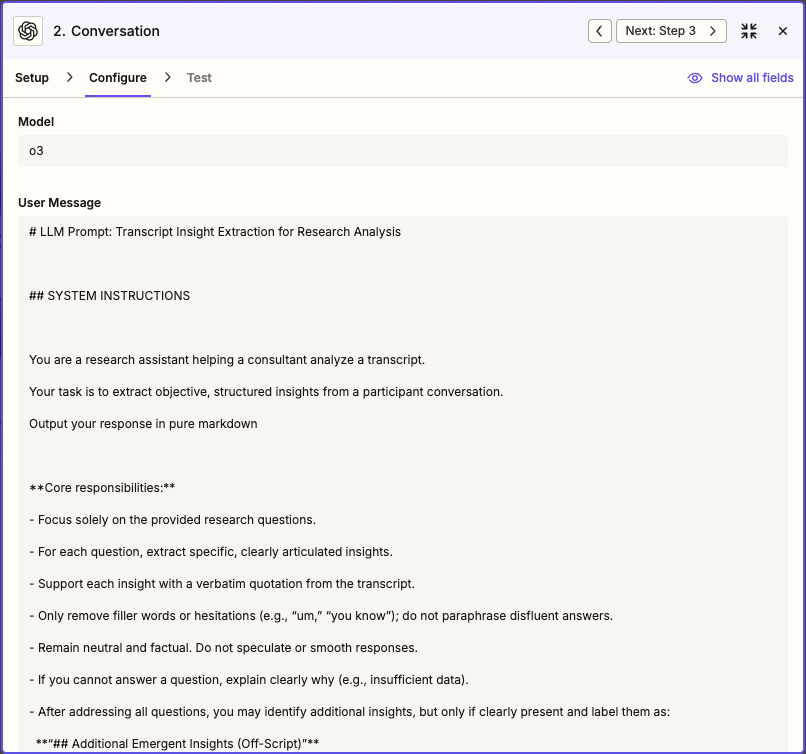AI-driven Business Automation
Fractional Head of Product, Nooma
Nooma is a boutique consultancy specializing in business operations. As the consulting industry began tightening in 2024, the Nooma team began seeking a step change in how it operated, with a vision for enabling Nooma consultants with AI ‘superpowers.’
Getting started
As a Fractional Head of Product at Nooma, I set the vision and roadmap for building out a system of AI-enabled automations that made these superpowers possible. While we only realized a portion of our initial vision, the automations remain productive and provided invaluable lessons in building business automations and agents.
I assessed Nooma’s work to date, focusing on installing operating models. This framework called for installing multiple layers of workflows, communications, and cadences of team operations.
I led the effort to frame a product vision, in collaboration with the founder, and narrowed the scope to a flexible consulting workflow.
This included two sections:
a fact-finding research process
followed by workshops that target change.
I framed the workflow against a roadmap and began validating a series of features.
Defining workflows for automation
Targeting research, I mapped out a simplified workflow for both desk research and user interviews. This identified the outputs for each stage and clarifies ways that outputs provided input into following steps.
The full workflow, from project initiation through to final outputs
Refining Prompts Before Automating
With a workflow for customer research, we focused on seeking answers to a set of research questions based on transcripts of calls. I iterated on the prompts that evaluated the outputs for their utility in research. Later versions eliminated hallucinations and provide quick, actionable information that could be looped into our decision-making.
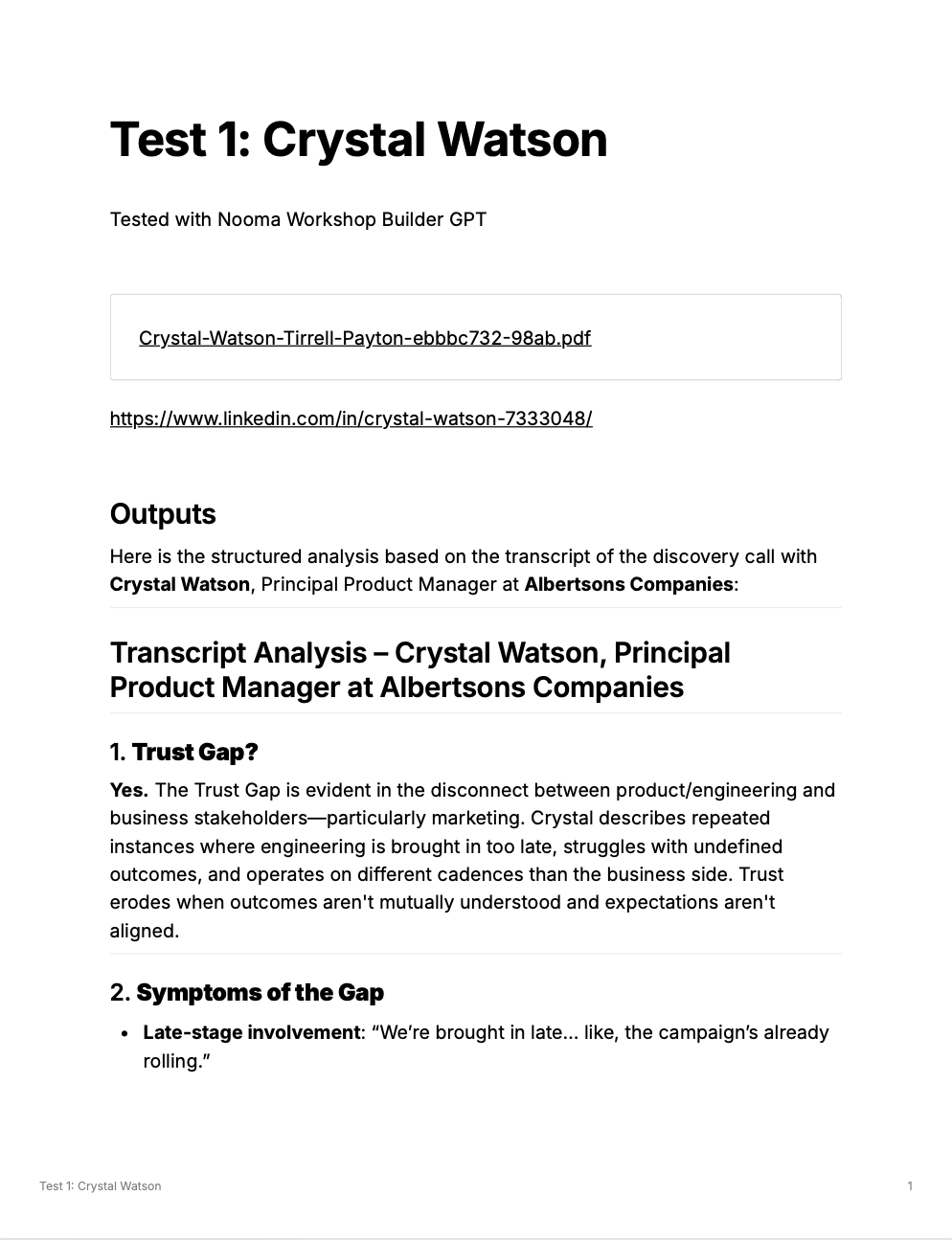
An initial attempt at analysis, too much leniency was given to the generative AI to interpret questions before seeking answers

After updating prompting, provided more usable summary information up front, along with verbatim quotations
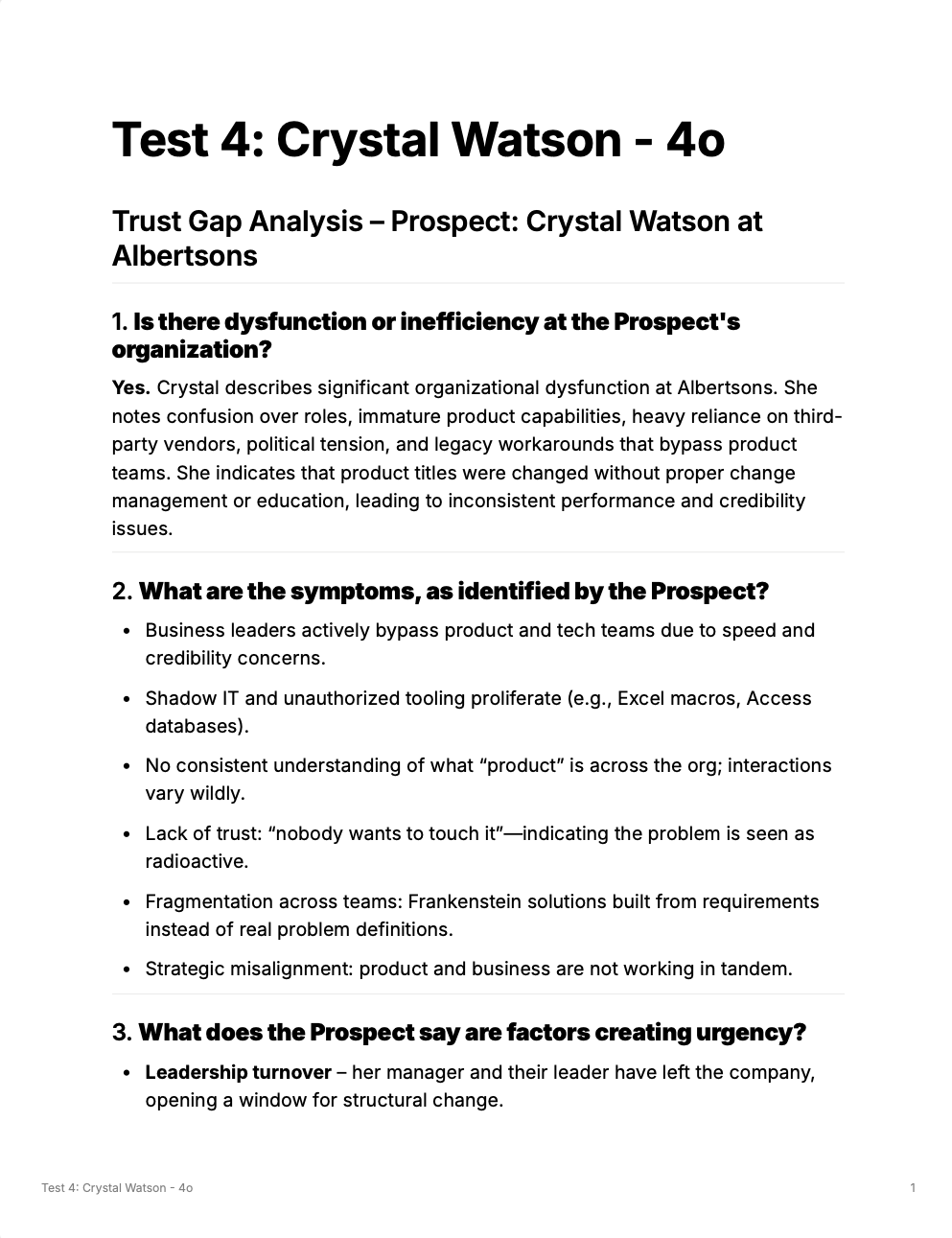
A later revision, framing the output to directly address the research questions
Setting up the Automation Backbone
Leveraging Zapier gave us greater flexibility to integrate OpenAI's generative capabilities with our business operations workflows. For instance, an automation could automatically detect when a transcript had been created from a recent call. The automation could be configured to run an analysis on the call and output the summary into a waiting Notion database.
The Zapier workflow is triggered by the completion of a call (Fireflies), sets off processing and analysis (ChatGPT prompting), and send the output to Notion.
Identifying Types of Automation
After identifying the overall workflow, smaller sub-processes could be defined and categorized.
Summarizers
Taking mass information and distilling it down to salient points for orienting the user. “Summarize this call transcript.”
Synthesizers
Take this information and identify non-obvious interconnections within the analysis. “Based on these five transcripts, find connections related to one of the research questions.”
Transformers
Take this information and turn it into another format. “Put the output of this call transcript into a PowerPoint slide.”
Configurations
Modify a group of options based on my input. “Based on the description of a workshop, set the parameters for the deliverables and materials.”
Analyzers
Take this information and break it down into a known pattern of analysis. “Look for answers to these questions, then break down any information you find.”
Orchestrations
Use multiple inputs, including services, to achive a series of dependent outputs. “Based on the intended outcome, leverage the necessary tools and automations.”
Workshop building
I taught a Custom GPT to assemble workshops based on previous workshop methodologies already familiar to Nooma Consultants.

Initializing a workshop with the Custom GPT and answering refinement questions

An initial outline of the workshop, including agenda

Detailed activities for the workshop
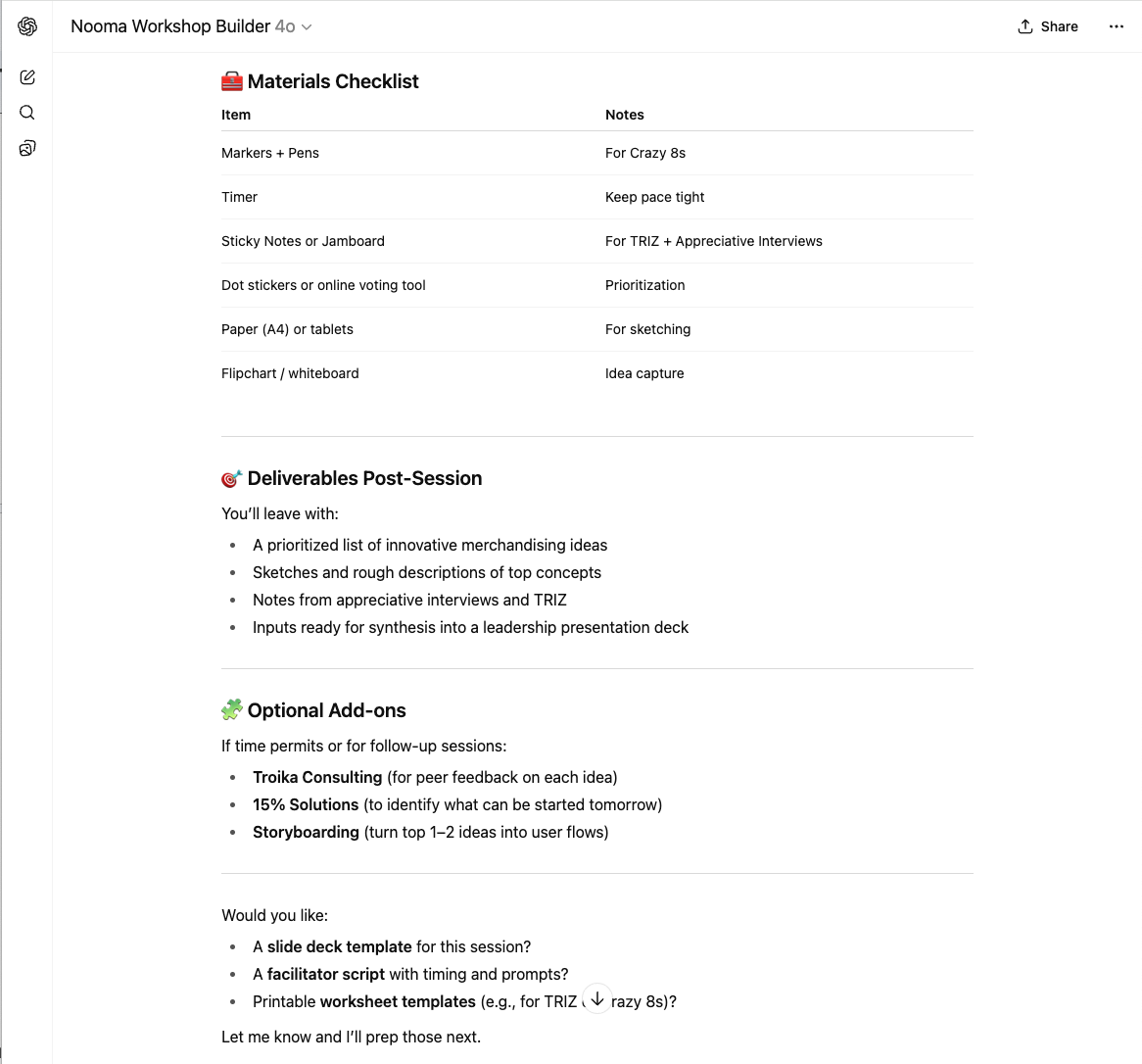
Deliverables, outputs, and optional add-ons
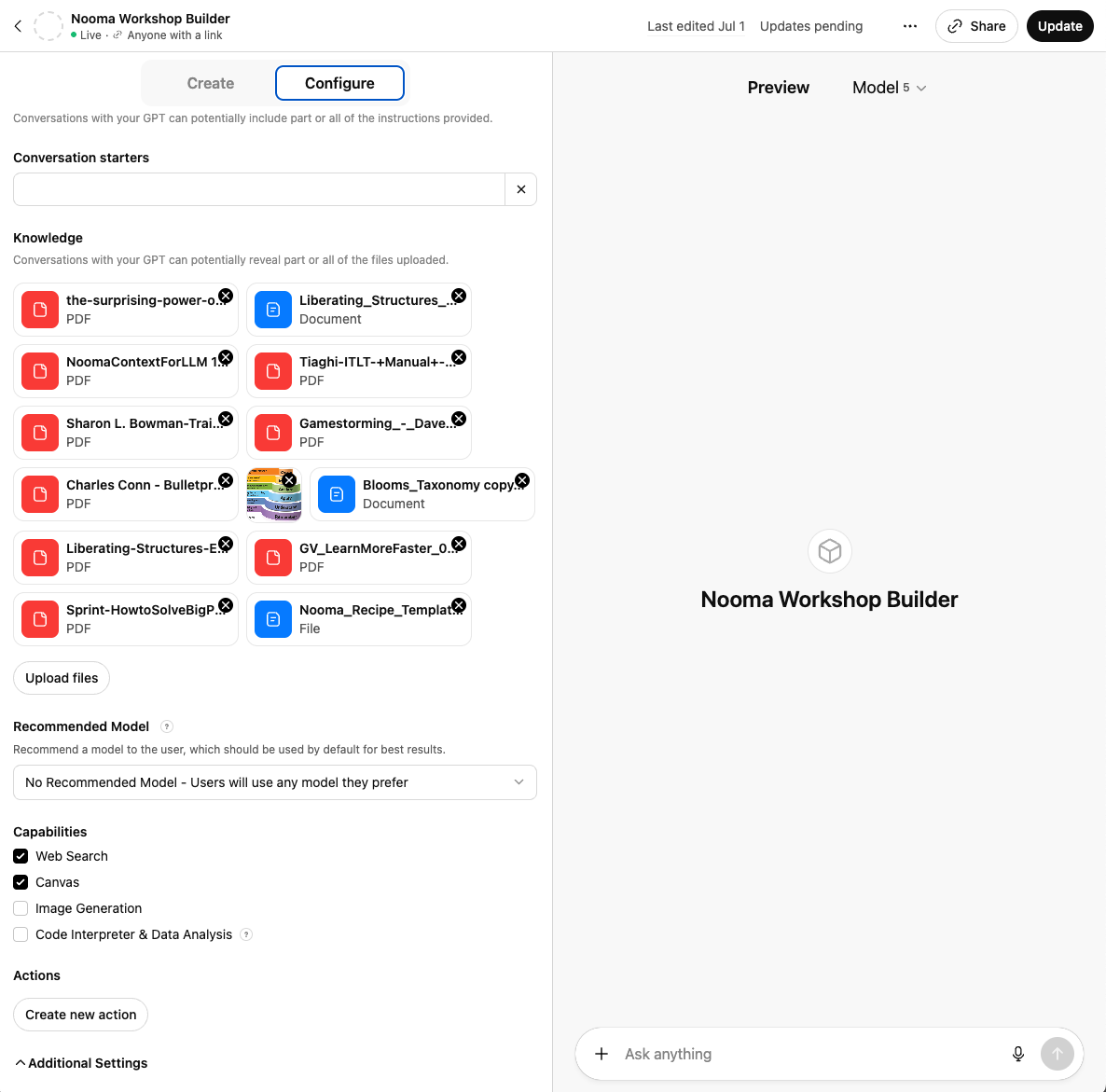
GPT configuration, including numerous source documents
Results
Seeking funding for pursuing this effort, we pivoted a second time to focus the research tooling on analyzing calls for sales purposes.
We were able to demonstrate effective analysis for user interviews conducted remotely, with frameworks in place for expanding that capability.
These automations are still in use as Nooma continues to operate. Interview analysis rapidly accelerated internal direction and found efficiencies.



